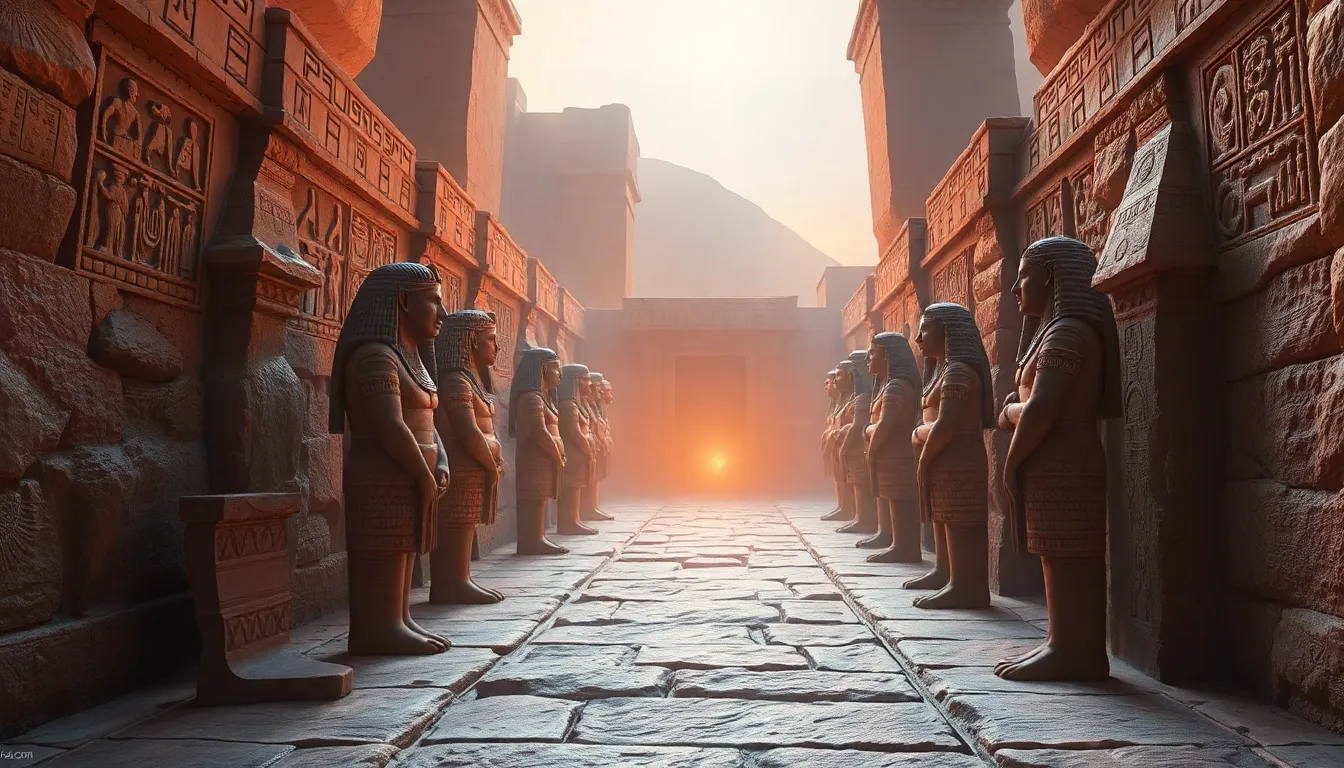Funerary Literature: Guiding Souls Through the Duat
I. Introduction
Funerary literature refers to a body of texts produced in ancient Egypt, designed to assist the deceased in navigating the afterlife. These texts were integral to the burial practices of ancient Egyptians, reflecting their beliefs about death and the journey that followed. The Duat, or the realm of the dead, is a central theme in these writings, representing both a daunting landscape and a place of transformation.
II. Historical Context of Funerary Literature
The evolution of funerary literature in ancient Egypt can be traced back to the Old Kingdom and continued to develop until the Ptolemaic period. Each historical era contributed its unique elements to these texts.
- Old Kingdom: The Pyramid Texts emerged, inscribed in the burial chambers of pharaohs, emphasizing the divine nature of kingship and the afterlife.
- Middle Kingdom: The Coffin Texts became common, providing guidance for the deceased and democratizing access to funerary knowledge.
- New Kingdom and Ptolemaic period: The Book of the Dead was widely used, filled with spells and illustrations designed to aid the soul’s journey.
These texts played a critical role in burial practices, offering a roadmap through the afterlife and reflecting the intricate beliefs surrounding death and rebirth in ancient Egyptian culture.
III. The Concept of the Duat
The Duat is a complex and multifaceted realm within ancient Egyptian mythology. It is described as a dark, mysterious place where the souls of the deceased journey after death.
- Physical Realm: The Duat is often depicted as a vast landscape filled with rivers, mountains, and fields, symbolizing both danger and fertility.
- Spiritual Realm: It serves as a transition space, where souls undergo trials and transformations before reaching the afterlife.
Several key deities are associated with the Duat, including:
- Osiris: The god of the afterlife and resurrection.
- Anubis: The god of embalming and the protector of graves.
- Ma’at: The goddess representing truth and justice, essential for the soul’s judgment.
IV. Major Themes in Funerary Literature
Funerary literature encompasses several major themes that reflect ancient Egyptian beliefs about the afterlife:
- The Journey of the Soul: The texts detail the soul’s journey through the Duat, facing challenges and seeking passage to the afterlife.
- Protection and Guidance: Spells and prayers are included to provide protection against malevolent forces and guidance through the trials of the Duat.
- Moral Judgment: The weighing of the heart against the feather of Ma’at is a critical aspect, determining the soul’s fate based on its deeds in life.
V. The Role of Illustrations and Iconography
Visual elements play a crucial role in funerary literature, enhancing the written texts and providing additional layers of meaning.
- Importance of Visuals: Illustrations serve to depict scenes from the Duat, making the texts more accessible and engaging for the deceased’s journey.
- Key Illustrations: The Book of the Dead features iconic images such as the weighing of the heart, the deceased’s encounters with deities, and the portrayal of the afterlife landscapes.
These images complement and enhance the written spells, creating a rich tapestry of guidance for the soul’s journey.
VI. Funerary Literature and Egyptian Society
The role of funerary literature extends beyond the individual deceased, impacting Egyptian society as a whole.
- Social Status: Access to specific funerary texts often depended on one’s social status, with elite individuals obtaining more elaborate versions.
- Personal Identity: Funerary texts helped shape how individuals were remembered, contributing to their legacy and identity even after death.
- Scribes and Practitioners: The creation of these texts was typically undertaken by skilled scribes and religious practitioners, illustrating the importance of literacy and knowledge in ancient Egyptian culture.
VII. Modern Perspectives on Funerary Literature
Recent archaeological discoveries have shed new light on the significance of funerary literature, challenging and enriching our understanding of these ancient texts.
- Archaeological Discoveries: Tomb excavations have revealed numerous examples of funerary texts, providing insights into ancient beliefs and practices.
- Contemporary Scholarship: Scholars continue to interpret these texts, examining their cultural, religious, and historical contexts.
- Modern Spiritual Practices: Some aspects of funerary literature have found resonance in contemporary spiritual practices, reflecting the enduring legacy of these ancient beliefs.
VIII. Conclusion
Funerary literature in ancient Egypt serves as a profound guide for souls navigating the Duat, illustrating the rich tapestry of beliefs surrounding death and the afterlife. These texts not only reflect the spiritual and cultural values of ancient Egyptian society but also inform our understanding of their complex worldview.
The narratives of the Duat continue to resonate today, reminding us of the intersection between literature, spirituality, and culture in shaping human experiences across time. The enduring legacy of these funerary texts is a testament to the ancient Egyptians’ profound engagement with the mysteries of life and death.




